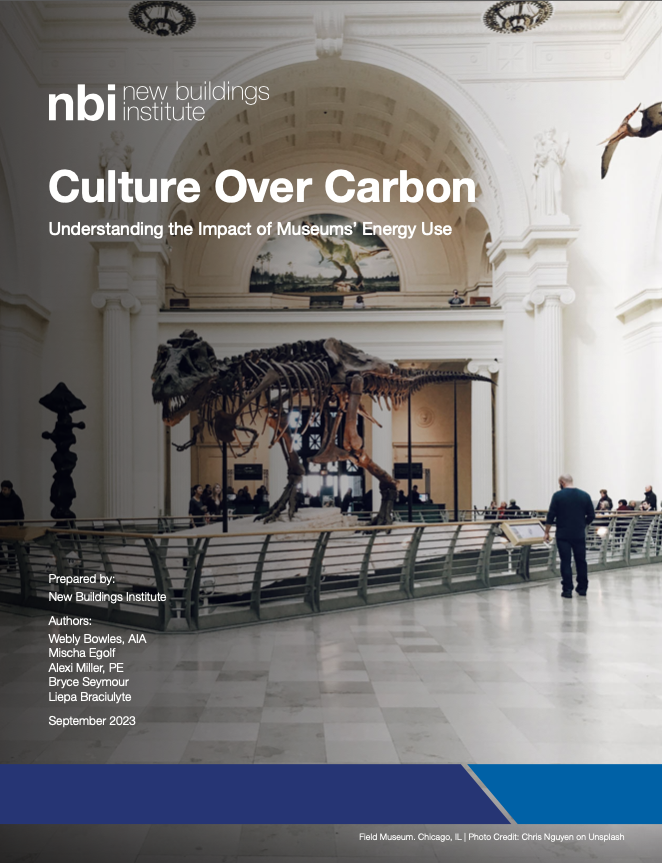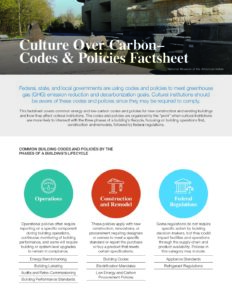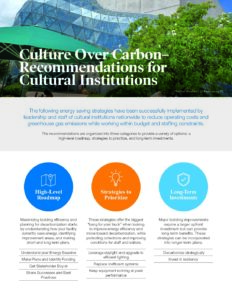Culture Over Carbon
Report / September 7, 2023 / Building Innovation

The Culture Over Carbon report shares the first in depth review of energy use patterns in cultural institutions across the United States and creates a roadmap for energy reductions based on best practices from this sector.
Cultural institutions play a crucial role in valuing and sharing local, regional, national, and global knowledge and expression. Increasingly, these institutions are taking responsibility for contributing to the well-being of the communities they serve.
In recent years, discussion around cultural institutions’ sustainability and energy use has become of interest. Cultural institutions have different building use patterns and characteristics, which can present energy challenges not often encountered in other public buildings. This can include high occupancy levels, blends of both indoor and outdoor spaces, large open interiors that require conditioning, and intricate professional expectations such as strict operational temperature and humidity requirements.
Key Additional Resources
 Culture Over Carbon–Codes and Policy Factsheet
Culture Over Carbon–Codes and Policy Factsheet
Federal, state, and local governments are using codes and policies to meet greenhouse gas (GHG) emission reduction and decarbonization goals. Cultural institutions should be aware of these codes and policies since they may be required to comply. This factsheet covers common energy and low-carbon codes and policies for new construction and existing buildings and how they affect cultural institutions. The codes and policies are organized by the “point” when cultural institutions are more likely to intersect with the three phases of a building’s lifecycle, focusing on building operations first, construction and remodels, followed by federal regulations. Access the Codes and Policy Factsheet
 Culture Over Carbon–Recommendations for Cultural Institutions
Culture Over Carbon–Recommendations for Cultural Institutions
The following energy saving strategies have been successfully implemented by leadership and staff of cultural institutions nationwide to reduce operating costs and greenhouse gas emissions while working within budget and staffing constraints. The recommendations are organized into three categories to provide a variety of options: a high-level roadmap, strategies to prioritize, and long-term investments. Access the Recommendations for Cultural Institutions
